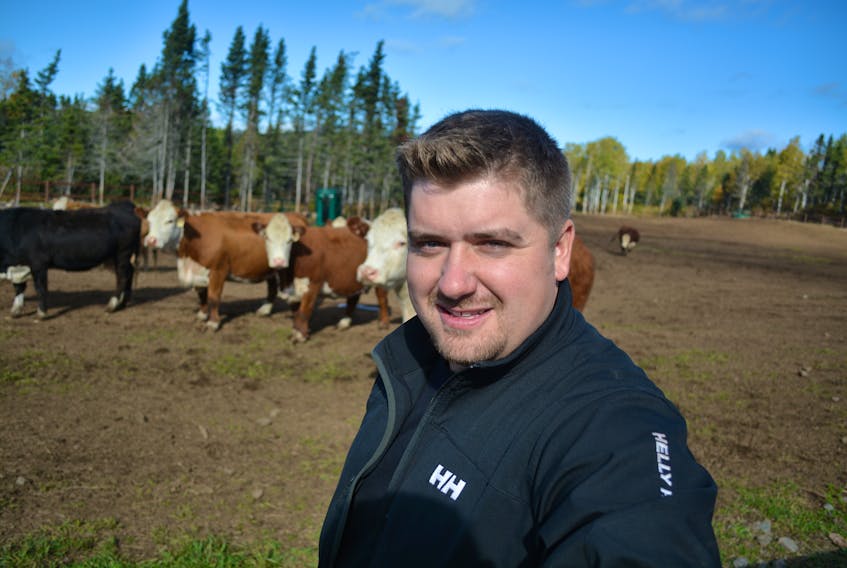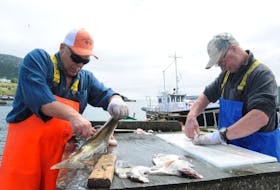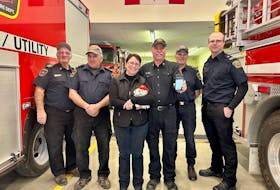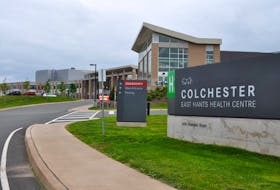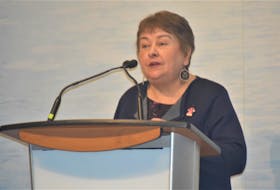If you want a good look at how a cattle project is doing, the best way is to get up close with the animals.

Spring Meadow Farm owner Tim Young made sure people got a good look at some of his farm herd during a media availability Wednesday.
Striding through one of the pastures carrying a red feed bucket, the 33-year-old Young shouted and called to a just small group of the animals under his care.
Soon, the animals were making a beeline for Young.
The Springdale farm is one of three in Newfoundland and Labrador taking part in the provincial government’s Beef Cattle Enhancement Demonstration Project.
The other two are Spruce Grove Enterprises in Daniel’s Harbour on the northern Peninsula, and Larch Grove Farm in Cormack on the province’s west coast.
The project is rather simple. Since 2016, the government has been assessing the provincial growth of cattle and helping those farmers produce high quality and local breeding stock to reduce the need to acquire purebred animals outside the province.
A subsidiary of this project would be the drop in the amount of beef imported into this province from other parts of Canada. In 2018, some 13.8 kilograms of imported beef entered Newfoundland and Labrador from elsewhere.
Local beef suppliers reported approximately 100,000 kilograms in sales. That is less than one per cent of of the province’s beef consumption, according to the government.
Minister of Fisheries and Land Resources Gerry Byrne attributes that to the price of feed and because some of the breeds previously used were not the best for this province’s environment.
“That has to change. That must change and it should change,” said Byrne. “By producing more beef in house, within our province, we lower our greenhouse gas emissions, we lower our carbon footprint for our food sources, but also, we create jobs...on the farms and new opportunities.”
Under the project, eligible farmers were able to apply for herds of Hereford cattle. The purchase price and cost to bring the cattle
to the farms was covered by the provincial government. It is expected the total cost of the project in three years is less than $100,000.
The Hereford breed, which is originally from England, has been identified by the province as a heartier breed that can fit into Newfoundland’s climate.
“My goal is to grow a registered breed, which would be Hereford and Black Angus, with some commercial beef cows,” said Young.
Right now, the Spring Meadow Farm has 60 cows on its land and it's expected 35 of those will calve through the winter and into the spring.
Young has his goals set on 200 cows in the next couple of years. Of those 200, half would be calving annually.
At the farm in Springdale, Young said the cows he received from the government have been doing well. They’ve been monitored monthly and the calves they have are growing about 2.2 to 2.8 pounds a day.
The support from the provincial government has been important to the work being done on the farm.
“To get involved with the genetic program allows us to be able to monitor on a monthly basis the growth,” said Young. “It gives us the opportunity to look at the Hereford, in particular, which is the breed that they’re supporting, with other breeds I have on the farm.
“We’re monitoring different breeds to see how they’re performing in our province and how they’re really adapting.”

